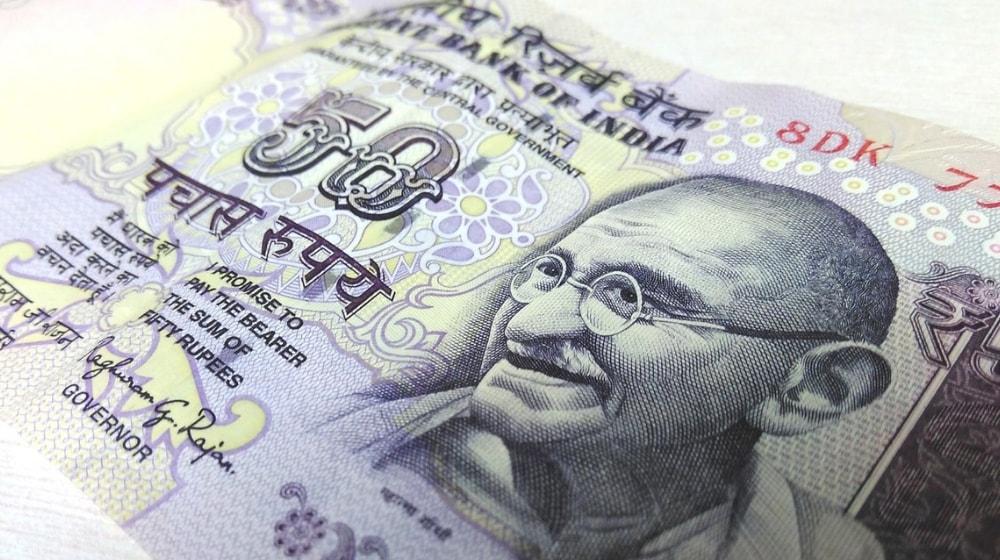Money is the lifeblood of every business. Lack of adequate and timely capital can inhibit growth.
Today, it has become imperative that new-age entrepreneurs and owners of micro, small and medium enterprises (MSMEs) look beyond traditional sources of business finance.
Many small businesses are denied credit for the lack of a collateral asset or poor credit score.
The tedious and time-consuming processes used by traditional banks add to the woes of entrepreneurs looking for loans.
Looking at the scenario objectively, the demand for financing in the Indian MSME sector is estimated at Rs 87.7 trillion, of which Rs 69.3 trillion is debt and the balance Rs 18.4 trillion is equity demand. It is virtually impossible for the formal finance sector to service the needs of approximately 56 million such enterprises across various industries. Hence, it becomes critical for entrepreneurs to explore alternative methods of financing.
6 methods of financing your small business in India
If you are a part of a fledgling business and looking to raise capital, here are six alternative sources of business finance you can explore.
1. Crowdfunding
In this internet age, crowdfunding is a great way to get a number of individuals interested in your idea, product or service and raise money from them.
This method uses the power of the crowd to invest small amounts, and bets on mass appeal.

Originally, crowdfunding was used by nonprofits to gather donations, very similar to ‘chanda’ collected in India during festivals. Today, online crowdfunding platforms generate financial backing for a variety of startups and projects.
There are multiple types of crowdfunding that MSMEs can use:
- Equity-based crowdfunding is when the investor gets a small percentage of share of the business in exchange of the investment pumped in.
- Reward-based crowdfunding involves individuals investing small amounts of money in exchange for a reward such as free service or a prototype product.
- Debt-based crowdfunding is when investors put in money with the understanding that it will be repaid with interest.
GoFundMe is very popular globally, with Milaap, Rang De and Kickstarter being top platforms in India.
2. Angel investors
For startups and young businesses that have a great idea or product but need a launch pad, angel investing is a great source of funding. Angel investors are also popularly known as seed investors or informal investors.
These investors help businesses get off the ground, while mentoring entrepreneurs and helping them learn the ropes.
There are thousands of such investors in India, mostly affluent businessmen or corporate leaders. They usually invest in niche areas.
In addition to the moolah, it is critical to find an investor that has experience and interest in your specific industry. Not only will their mentorship be valuable, their huge network will also prove to be a bonus to help expand your business.
The best way to meet angel investors is at networking events and pitch sessions.
3. Venture capitalists
Venture Capitalists (VCs) come in at a later stage of business growth. They provide capital to firms exhibiting high growth potential in exchange of stake in the company.

VCs usually invest in businesses already making money.
To get a VC interested in your business is not an easy task. You will need to have:
- A strong and sustainable business model,
- Proven sales records
- Loyal customers
They also look for a strong management team before they invest.
Ensure you partner with a VC who understands your business and is aligned with your growth, as you will be giving them a say in your business. While for most businesses, getting VC funding is the ultimate goal, the focus should be on partnering with the right VC firm.
Top VCs in the country include Accel, Blume Ventures, Chiratae Ventures, Nexus Venture Partners and Sequoia Capital India.
4. Business plan competitions
You may not have the opportunity to pitch your idea on Shark Tank, but keeping an eye out for business competitions near you. These can offer a small window of opportunity to get seen and heard by the right people.
Many B-schools and savvy corporates organise business plan competitions and hackathons that attract the brightest minds across the country.
The finalists get to present their business ideas to some of the biggest VCs in India. A winning pitch can get you a considerable cash prize, access to an accelerator programme and equity participation from interested investors.
Wharton India Startup Challenge, STARup, Innopreneurs and Raise My Startup are few leading platforms that can help MSMEs get a shot in the arm.
5. P2P lending
The new-age lending model called Peer-to-Peer platforms (P2P) allows retail investors to lend money to peers or small businesses via a fintech company’s digital platform.
Applicants are vetted by the fintech company or intermediary based on complex algorithms that assess the credit-worthiness of the proposed borrowers over various risk factors.
Based on the risk profile, interest obligation on P2P loans can start as low as 12% up to as much as 35%. The cost to the borrower is directly proportionate to the risk involved for the lender.
An investor has the option of fulfilling partial or complete requirements of a business. Most fintech companies allow only a partial investment in a single requisition, with multiple investors contributing small amounts to a single business.
P2P loans are a good option for stop-gap and working capital requirements with speedy approvals and disbursals.

Faircent.com India, Cashkumar, i2iFunding and LenDenClub are among the eight RBI-licenced P2P providers.
6. Government schemes
Presently, India is the second-fastest-growing economy in the world. Small and medium enterprises (SMEs) form the backbone of our economy, producing 45% of the industrial output and 40% of total exports. However, they struggle to find adequate credit at a reasonable cost.
Many startups have the funds to begin operations but as business grows, they need financial assistance to give their business a boost. The most common credit requirements for small businesses are:
- Working capital loans for bridging gaps in cash flow and fund day-to-day operations
- Term loan requirement for business expansion and capital purchases, such as land or buildings
- Equipment financing for procurement or up-gradation of machinery
Banks can be reluctant in lending to small businesses given the high risk involved, and often request for collateral security. However, budding entrepreneurs don’t often have property or other possessions valuable enough to secure bank loans.
The Government of India (GOI) is betting big on the entrepreneurial spirit of India and doing its bit to promote and support MSMEs by providing several government business loans to facilitate the credit to small companies.
Most of these loans are available at extremely competitive rates, usually much cheaper than personal loans with flexible repayment tenures ranging from five to 11 years.
Here is a list of loans and schemes you can benefit from as a small business:
1. The Credit Guarantee Fund Scheme for Micro and Small Enterprises
Small businesses face two major concerns while availing business loans:
- Non-availability of adequate credit
- Inability to provide collateral security for the loan
To facilitate quick and easy credit to small and micro businesses, the Ministry of Micro Small and Medium Enterprises and the Small Industries Development Bank of India (SIDBI) have established a trust named Credit Guarantee Fund Trust for Micro and Small Enterprises (CGTMSE). It was launched by the GoI in 2000 to address both of the above-mentioned issues.
This scheme is well-suited for businesses that don’t own high-value assets (land, buildings, etc). The trust covers up to 75% of the loan allowed under the CGTMSE scheme, up to a maximum limit.
Under this scheme, small businesses are eligible for both working capital and term loans of up to Rs. 1 crore. The scheme extends collateral-free credit to the small and micro businesses (one to two employees).
The business loans under this scheme are financed by different public and private sector banks. The scheme covers both existing as well as new enterprises. Business owners can avail both working capital as well as term loan facility under this scheme. Consult the link provided above for complete details.

2. Small business loan in 59 minutes (PSB-59)
PSB loans in 59 minutes is an online portal launched by the Government of India in 2018 to provide quick in-principle loan approvals to micro, small and medium enterprises in 59 minutes. Around 19 public sector and private banks partner in this initiative and evaluate the loan proposals based on several data points.
Previously, it would generally take eight to 10 working days from the day of submission of the required documents to receive the loan funds.
With this portal, the borrower can submit all the information and documents on the online portal and receive the initial approval from the preferred bank in less than one hour. The borrower will then approach the designated branch to process the loan application further and get the loan disbursed.
This GoI initiative saves small businesses from the:
- Lengthy approval processes of banks
- Complicated documentation
- Frequent visits to lenders’ offices
There is also no mandatory requirement for any collateral.
3. Micro Units Development and Refinance Agency (MUDRA)
MUDRA is a non-banking financial company that supports the growth of small and micro businesses in India. It funds banks and other institutions that provide loans to small businesses. While it doesn’t lend directly, it encourages other lenders to provide loans to small businesses (by way of refinancing).
These government business loans are given by commercial banks, small finance banks and various other non-banking financial companies.
Pradhan Mantri MUDRA Yojana offers loans to non-corporate, non-farm small/micro-enterprises. This scheme is open to traders, shopkeepers, service businesses and those seeking equipment and vehicle financing.
MUDRA loans are classified under three categories — Shishu, Kishore and Tarun — according to the size of the loans disbursed. Shishu offers the smallest loans, while Tarun provides the largest loans. Loans range from Rs. 50,000 all the way up to Rs. 10 lakh (check current levels here).

MUDRA loans are extended for various purposes and can be availed from the closest branch of partner banks. Now, borrowers can also apply online for MUDRA loans on the Udyamimitra portal.
4. Credit Linked Capital Subsidy Scheme (CLCSS) for technology up-gradation
Technology is an essential part of any successful business. Businesses need technological upgradation for:
- Improved efficiency
- Better quality of the product
- Improved environmental conditions (including working environment)
But many small startups cannot afford state-of-the-art manufacturing plants and machinery. Therefore, the Ministry of Small Scale Industries has introduced this government business loan scheme called Credit Linked Capital Subsidy Scheme (CLCSS).
CLCSS offers an upfront 15% capital subsidy to small-scale industries for technology up-gradation. Loans are granted in cases where the new technology is a significant step up from the present technology.
At the time of this writing, the maximum loan under this scheme is Rs. 1 crore. Accordingly, the eligible plant and machinery can avail a subsidy of a maximum of Rs. 15 lakhs.
The eligible beneficiaries under the scheme include sole proprietors, partnerships, cooperatives, as well as private and public limited companies.
The list of industries that can benefit from this scheme and maximum loan amounts are available on the Ministry's website.
5. Stand-up India scheme for protected groups
The Stand-up India scheme for protected groups was launched on 5 April 2016 to encourage the spirit of entrepreneurship amongst:
- Women
- Members of scheduled caste (SC)
- Members of scheduled Tribes (ST)
Through this small business loan, GoI aims to encourage bank loans to at least one:
- Scheduled Caste (SC) or Scheduled Tribe (ST) borrower per bank branch
- Woman borrower per bank branch
As per the scheme, the eligible candidates can avail bank loans for setting up an enterprise from scratch in the manufacturing, trading or service sector. In the case of non-individual enterprises, at least 51% of the shareholding and controlling stake should be held by either an SC/ST or woman entrepreneur.
The purpose of this loan is to support greenfield projects in the manufacturing, trading or service sectors.
You can apply for the loan directly on the Stand Up India portal, through any branch of Scheduled Commercial Banks or through your lead district manager.
6. National Small Industries Corporation (NSIC) schemes

NSIC through its various programs and schemes provides financial assistance to micro, small and medium enterprises. Some important NSIC services are:
- Raw Material Assistance loans: This scheme helps small businesses to finance the purchase of raw materials. The scheme also helps them in getting bulk orders and cash discounts from the suppliers.
- Help with loan applications: NSIC also facilitates credit to small companies from their partner banks. It helps the companies in completing the documentation and also does the follow up with banks on the loan applications.
7. Pradhan Mantri Kisan SAMPADA Yojana (PMKSY)
PMKSY is a combination of various government schemes, with the goal of creating modern infrastructure and efficient supply chain management, stretching from the farm gate to the retail outlet. This Government of India initiative makes credit available to SMEs in the non-agricultural sector. Small and micro businesses can avail of unsecured and collateral-free credit under the Sishu, Kishore and Tarun schemes.
- Sishu allows an SME entrepreneur to avail of credit up to the extent of Rs.50000
- Kishore makes amounts up to Rs. 500000 available to qualified borrowers
- Tarun is for SMBs seeking up to Rs. 1000000
Another very important feature of this initiative is the fact that the loans obtained under its three schemes can be used both to:
- Start new businesses and
- Fund existing working capital needs
If you are looking at obtaining an MSME loan for a new business, PMMY might be the perfect solution for you. The easy and hassle-free terms of borrowing offered by this initiative are its greatest plus point.
This scheme provides a boost to food processing plants, food parks, cold chain and warehouses.
Click the PMKSY link above for details on:
- Mega Food Parks
- Integrated Cold Chain and Value Addition Infrastructure
- Creation/ Expansion of Food Processing/ Preservation Capacities (Unit Scheme)
- Infrastructure for Agro-processing Clusters
- Creation of Backward and Forward Linkages
- Food Safety and Quality
As you can see, the GoI is serious about fuelling the growth of the Indian economy by making it easier for small ventures to get credit.
Types of SME business loans in India
1. Line of credit

A line of credit or overdraft facility can be availed from a bank or a Non-Banking Financial Company (NBFC). If the bank agrees, it will set a maximum amount it is willing to lend. The borrower can withdraw money any time until they reach the maximum set by the lender.
The lender charges interest only on the borrowed amount, not on the maximum amount.
Based on the length of the banking relationship, credit history and cash flow status, any bank may extend a credit line to the owner of a business.
Usually a line of credit facility requires collateral such as a fixed deposit or a specified balance in the account as prescribed by the bank.
Related: Domain name search: your first priority business startup task
2. Working capital loan
Working capital is the money required to fund daily business operations like:
- Employee salaries
- Electricity bills
- Rent
- Purchasing new inventory
A working capital loan is similar to an overdraft facility. However, unlike buying fixed assets like equipment, machinery or investing in land or buildings which are for long term, working capital is a short-term need of a business. Hence, such funds cannot be used for anything else other than day-to-day operational needs of the business.
Banks monitor the cash flow and inventory of the business to ensure the funds are used as agreed. The lender might also conduct periodical audits to ensure there are no defaults on the loan.
Approvals for such loans are swifter than credit lines. Customisation of terms are possible based on the borrower’s relationship with the bank. These loans are extended for a brief period of time, usually spanning three to 12 months. Check with your local bank on the current interest rates for working capital loans.
Why you might need a working capital loan?

There are instances when a small business needs an infusion of cash to be pumped into the system:
- Business seasonality: Many businesses follow a trend, or seasonality, in their sales volume. While they are preparing for their peak season of sales, they may not be getting sufficient cash inflows to sustain the cost of production. In such a case, a working capital loan can be helpful to see them through the off-season. The loan can be repaid once the demand for the product or service rises again.
- Capitalising on a business opportunity: You may get a new opportunity — say a new contract for which you need to hire extra employees or buy additional raw material — but you will receive a small advance payment from the buyer up-front. It is common for the balance to be paid after delivery of the finished goods. The working capital loan comes to the rescue during these times. You simply repay the loan once you receive the balance payment from the buyer.
How to calculate the working capital you have now?

Here’s a simple formula to calculate your net working capital:
Working capital = Current assets - Current liabilities
Let’s look at the two parts of the equation.
Current assets
All businesses should have a balance sheet that lists both assets and liabilities.
Your business’s current assets include:
- Product inventory
- Accounts receivable (money due to come in)
- Cash
- Other assets that you plan to turn into cash within 12 months
Current liabilities
Your business's current liabilities include any expense that must be paid within 12 months:
- The next 12 months of payments on long-term debts
- Taxes
- Employee wages
- Accounts payable (payments due to vendors, etc)
By subtracting your total liabilities from your assets, you get your working capital figure. This is the amount of money available for ready use.
A business with sufficient working capital is not just self-sustainable but has a good reputation in the eyes of investors, lenders and suppliers.
Related: How to write a business plan?
4 steps to getting a working capital loan
There are many banks, NBFCs and private companies that offer various types of business loans. The Indian government also has several initiatives you might qualify for. Follow these steps to find the best loan for you.
- Confirm your eligibility: Check your eligibility for the loan as every loan provider has their own eligibility criteria. The easiest way to find out if you qualify for a particular loan program is by using the links provided above. You can also stop at the nearest branch of major banks to request information in person.
- Check the processing time: If you are in debt to the brim, you may need the cash immediately. Public sector banks take a longer time period to complete the process (from weeks to month) as compared to the private entities that are quick and hassle-free.
- Do they offer unsecured loans? If you are a startup or a new venture, you may not have a substantial asset such as property to offer as collateral security. Chances are you don’t have a long credit history. Therefore, it is hard to get OD from banks. In this case, you may choose an unsecured loan from a private loan provider.
- Look for hidden fees or clauses. You might need the loan quickly, but don’t rush through important clauses in the documents. Be sure to check the:
- Interest rate
- Interest reset clause (if any)
- Payback period and schedule
- Minimum loan amount
- Processing fees (if any)
- Hidden costs or clauses
Read the loan documents carefully as any unfavourable small condition or clause can lead to higher expenses later on. Once you’ve signed and the loan is approved, you’re committed to the terms of the loan.
3. Term loan
Term loans are ideal for businesses that are looking to acquire or upgrade their physical assets such as:
- Office buildings/machinery.
- Product lines.
- Open locations in new business territories.
These are called Capital Expenditures (CapEx) and require long-term funding. Term loans for MSMEs usually span three to seven years and are attached to collateral such as buildings, stock, machinery, etc.
The amount of funding possible and loan interest depends on the:
- Sector in which the business operates.
- The business’ credit rating.
- Strength of the business balance sheet.
- Valuation of the collateral.
A host of banks and NBFCs have quotas earmarked for small businesses. These loans are paid back through Equated Monthly Instalments (EMIs).
Term loans are cheaper than lines of credit and working capital loans.
Small business owners can shop around for the best possible deal. However, the turnaround time on applications and approvals is arduous. Most institutions require three years’ audited financials of the business, making term loans inaccessible to startups.
4. Bank guarantee
SMEs can apply for various types of bank guarantees tailored based on their past financial transactions. The bank guarantees might be in the shape of an:
- Advance payment guarantee
- Performance guarantee
- Deferred payment guarantee
- Foreign bank guarantee
These bank guarantees are issued on the payment of the specified fees. In certain cases the bank may require the SME to pledge certain current assets or equity as collateral to get the bank guarantee.
A bank guarantee can also be used to convince the suppliers and customers of your business that you’re able to honor your commitments.
5. Business loan against assets
When it is not possible for SMEs to obtain unsecured or collateral-free credit, SME business owners can use their personal and business assets to raise funds.
The size of a loan obtained against business assets is determined by their current market value.

One major advantage of this kind of SME loan is that the rate of interest charged is lower than in the case of unsecured business loans.
6. Invoice discounting
Quite distinct from other forms of commercial borrowing, invoice discounting allows small businesses to raise money for working capital by leveraging their current assets for cash. Some lending institutions enable borrowers to do this by discounting their bills of exchange, unpaid invoices and promissory note before their due dates.
The borrowers can obtain the funds they need to keep their businesses running by parting with a certain percentage of the money realizable against their current assets. That is a way to get quick funding without having to take on any additional debt.
7. Business loans for women entrepreneurs
In addition to the Stand-Up India scheme, a handful of nationalized banks provide SME business loans that favour women entrepreneurs:
Most banks have the processing fee waived off and offer collateral-free loans at interest rates on par with MCLR. The structure of the loan differs from bank to bank, as does the tenure.
As the name suggests, the controlling stake of the business must be held by a female promoter.
Loan requirements everyone must meet
As with any other form of commercial borrowing, anyone seeking a small business loan is required to fulfil certain conditions to qualify for the loan. These typically include:
- The person applying for the loan should be an Indian citizen
- He or she should be self-employed with a minimum of three years of experience in running a business
- The person applying for the loan should be at least 21 years old
- The business in question should be a profitable one, as shown in the balance sheet
To prove the last item, you’ll need to provide the business turnover and income tax returns for your business (last two to three financial years).
In-depth look: Commercial loans in India
With India being the second-fastest growing economy in the world, there has been a rise in demand for commercial property in the last few years. But, it is not easy for a small business to own property, as it requires more money than most young firms have on hand. Hence, there is a need for a commercial loan to help make the purchase possible.
Be it an office space, garage, warehouse or a shop — you need space for establishing and growing your business.
Though lenders these days are quite aggressive in giving residential home loans, commercial real estate builders are witnessing multiple rounds of document scrutinies and delays of 60 to 90 days in the approvals due to the high risk involved.
In this section, we will delve into requirements to obtain a loan for purchase of commercial property.
All about loans for purchase of commercial property

Photo: Smartworks Coworking on Unsplash
Businesses can use a commercial loan for:
- The purchase of under-construction/ready-to-occupy office space
- The purchase of under-construction outlet/ready-to-occupy retail outlet
- Renovating an existing commercial space
With a commercial property loan, businesses can use their cash flow to repay the loan in instalments over the tenure.
Commercial loans are different compared to residential loans. However, there are some common standards and features between the two, which we are going to discuss below:
Loan-to-value ratio
With a typical home loan, lenders are willing to fund 85 to 90% of the home’s value. But in the case of commercial office space, lenders will only fund 55 to 60% of the property value.
You must pay at least 40% of the property value from your own pocket.
While selecting the property, you should keep this loan-to-value ratio in mind, as you must have sufficient funds to purchase the property — even with loan funding.
Interest rate
Banks charge an interest rate that is one to two percent higher for commercial property than for residential home property. You should mind the interest cost of the loan, as it will have a direct impact on the profit and loss of your business.
Processing fees
The bank will charge you processing/up-front fees of around one to two percent. There can be some discount on the fees, depending on the credit profile of the borrower, so be sure to ask.
Loan term
Where residential home loans can go up to 30 years, commercial loans have a maximum tenure of 15 years. Most commercial loans are given for a period lasting fewer than 10 years.
Security
Banks keep the mortgaged property as the primary security. In case the borrower is unable to repay the loan, the bank has the right to sell the property and recover the outstanding loan balance.
Documentation
There is a standard set of documents that banks execute with the borrower. It includes the:
- Know Your Customer (KYC) of the borrower
- Income proof documents
- Property documents
- Copy of approvals for the property
- Execution of loan agreement and other undertakings with the bank
Be sure to have all documents ready to go before you approach a lender.
Factors that affect your commercial loan application & approval

There are some important parameters that can make your application stronger and get it approved at the earliest. Use this checklist to increase your chances of timely approval.
1. Financial strength of the individual/business
Banks like their borrowers to have a good credit score and a consistent and sufficient source of funds to make loan payments. To ascertain your credit strength, banks mostly ask for your:
- Business bank account statements
- Income tax returns
- Financial statements
The better your credit score and more regular your cash inflows, the higher the chances of getting credit from a bank.
2. Technical evaluation
Banks keep the mortgaged property as their primary security with an intention to sell the property and settle their dues in case you are unable to repay the loan.
It is mandatory for the bank to evaluate the property that you are planning to purchase.
You can improve your chances of receiving loan approval by ensuring the building meets all the technical requirements including fire safety equipment, shafts, lifts and emergency exits.
3. Approvals
Banks require the borrower to submit all the approvals that are applicable on the property up to the date of applying for the loan. If there is any pending approval, then it is a risk on the part of the borrower as well as the bank. The bank wants a clean and marketable property as the primary security.
4. Area

Banks tend to finance only the properties which are over a minimum size in terms of the area. You should check about this minimum area with your preferred bank before selecting a property and making the loan application.
5. Builder reputation
For an under-construction property, builder reputation matters a lot for the bank. A property being developed by a reputed builder who is known to deliver the projects on time stands a better chance of being financed by the bank.
6. Collateral security
If you are seeking a loan for an under-construction property, you can also strengthen your application by offering additional collateral security to the bank. The offered collateral can be any other mortgage-free land or property that you already own. It helps to offer high-security cover for the lender and reducing their risk in the loan.
Sources of business finance & loans in India
A plethora of funding options available from the crowdfunding, VCs, digital platforms and even retail investors are making it easier for businesses to start up and thrive today. The questions you need to ask yourself are:
- How prepared are you to take advantage of the opportunities?
- Which is the right source of business finance for you?
- Do you have a robust business plan and a clear roadmap to drive growth?
Once you have a clear vision, the above methods of financing can turn your entrepreneurial dream into reality.
The information contained in this blog post is provided for informational purposes only, and should not be construed as financial or tax advice, or an endorsement or advice from GoDaddy on any subject matter. Always consult an accountant or tax professional regarding your ability to qualify for loan funding.
UPDATE: This sources of business funding in India post was first published on 19 August 2019 and updated on 8 January 2024. It also contains content written by Tushar Johari, Digvijay Singh, Charu Mitra Dubey, Saumya Dwivedi and Kristian Rivera.





